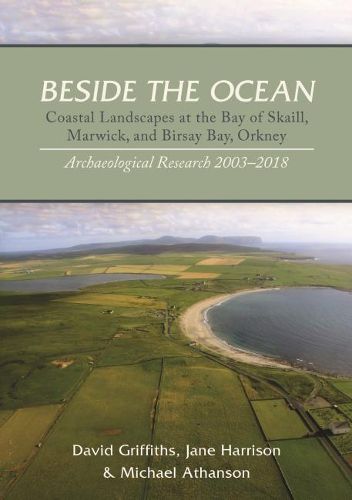Readings Newsletter
Become a Readings Member to make your shopping experience even easier.
Sign in or sign up for free!
You’re not far away from qualifying for FREE standard shipping within Australia
You’ve qualified for FREE standard shipping within Australia
The cart is loading…






he Bay of Skaill, Marwick Bay, and Birsay Bay form openings in the high sandstone cliffs of Orkney’s Atlantic coast. These west-facing bays have long been favoured locations for settlement, with access to the ocean, to fresh water, to land and to resources for cultivation. The coastline of Orkney’s North-West Mainland is recognised worldwide as a location of exceptional archaeological importance, dominated by the Neolithic world heritage site of Skara Brae, and the Viking-Norse remains on the tidal Brough of Birsay. Many of its archaeological sites have been exposed by coastal erosion, a serious problem which continues its destructive progress with every oceanic storm. Rescue excavation has contributed essential data, but its resources have concentrated on the zone of immediate threat, and until recently less has been understood about the archaeology of the landscape that lies behind the eroding shore. From 2003, a new archaeological research project began to investigate the hinterlands of the three bays. Using the rapidly-developing applications of archaeological geophysics, coupled with topographical survey, it has sought to create a broader and better-informed landscape context. Much of the land is dominated by windblown sand, at the Bay of Skaill and Birsay Bay in particular, reflecting centuries of environmental change, and requiring adaptive methodologies and approaches. Several new areas of archaeological interest have been identified, and many previously-known sites are now better-understood. Excavation was used selectively to test the survey results. In one area in particular, a cluster of large settlement mounds on the northern side of the Bay of Skaill, two major Viking-Norse settlement clusters were identified and investigated. These held exceptionally well-preserved deposits, which have required detailed dating and analysis. The artefact assemblages include evidence for ferrous metalworking along with iron and copper alloy objects, combs, glass and amber beads, worked stone, ceramics and a range of archaeobotanical and archaeozoological remains. A Viking silver hoard discovered in 1858 and a Viking grave uncovered in 1888 are revisited. This monograph brings together the survey and excavation results, and tells a new story of an ancient landscape.
$9.00 standard shipping within Australia
FREE standard shipping within Australia for orders over $100.00
Express & International shipping calculated at checkout
he Bay of Skaill, Marwick Bay, and Birsay Bay form openings in the high sandstone cliffs of Orkney’s Atlantic coast. These west-facing bays have long been favoured locations for settlement, with access to the ocean, to fresh water, to land and to resources for cultivation. The coastline of Orkney’s North-West Mainland is recognised worldwide as a location of exceptional archaeological importance, dominated by the Neolithic world heritage site of Skara Brae, and the Viking-Norse remains on the tidal Brough of Birsay. Many of its archaeological sites have been exposed by coastal erosion, a serious problem which continues its destructive progress with every oceanic storm. Rescue excavation has contributed essential data, but its resources have concentrated on the zone of immediate threat, and until recently less has been understood about the archaeology of the landscape that lies behind the eroding shore. From 2003, a new archaeological research project began to investigate the hinterlands of the three bays. Using the rapidly-developing applications of archaeological geophysics, coupled with topographical survey, it has sought to create a broader and better-informed landscape context. Much of the land is dominated by windblown sand, at the Bay of Skaill and Birsay Bay in particular, reflecting centuries of environmental change, and requiring adaptive methodologies and approaches. Several new areas of archaeological interest have been identified, and many previously-known sites are now better-understood. Excavation was used selectively to test the survey results. In one area in particular, a cluster of large settlement mounds on the northern side of the Bay of Skaill, two major Viking-Norse settlement clusters were identified and investigated. These held exceptionally well-preserved deposits, which have required detailed dating and analysis. The artefact assemblages include evidence for ferrous metalworking along with iron and copper alloy objects, combs, glass and amber beads, worked stone, ceramics and a range of archaeobotanical and archaeozoological remains. A Viking silver hoard discovered in 1858 and a Viking grave uncovered in 1888 are revisited. This monograph brings together the survey and excavation results, and tells a new story of an ancient landscape.